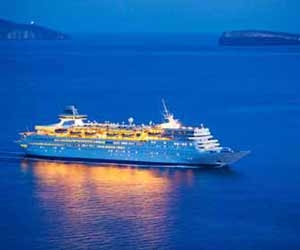New Cruise Line Industry Developments
Now that cruise lines have gotten millions hooked on the pleasures of cruising, they’re looking for ways to hook millions more. According to Art Rodney, president of Disney Cruise Lines, over 90 percent of Americans who can afford to take a cruise have not.

Thus, many of the latest developments in the cruise industry have come about as a result of efforts to lure first-timers on board.
Cruise lines are finding that for many potential cruisers, shipboard pampering is not enough. Many people also want to spend their vacations experiencing foreign cultures or learning new hobbies. To appeal to these people, cruise lines are adding special-interest cruises to their repertoires, focusing on everything from gardening to jazz to oil painting. Silversea launched a program that offers passengers an opportunity to learn more about geography, culture, oceanography, photography, and nature from National Geographic Society photographers and journalists. In addition to onboard lectures, there are also shore excursions hosted by National Geographic experts. In this day and age there’s a major focus on destinations. Cruises to Europe, the Amazon, Africa, and Asia have grown in popularity.
Along with the boom of the cruise industry there have been a number of company shake-ups, mergers, and rising competition. As with any maturing and expanding business market, larger cruise lines have swallowed up smaller companies in a number of cases. Small companies become medium sized. Medium sized companies become mega-companies!
Every year the world’s cruise lines launch new ships (big and small, refurbished, new builds!). Here is a great list of new cruise ships launched by year. Bottom line: The industry shows no signs of slowing and we should see a steady introduction of new cruise ships over the next five years.
Another recent development in the cruise industry has been the divergence between companies building larger and larger ships versus those catering to customers who want a more intimate experience. Companies like Royal Caribbean have been busy building “megaliners” capable of carrying up to 3,000 passengers. These vessels continue to add more and more amenities, such as virtual reality gaming rooms, ice-skating rinks, and multi-story shopping centers, as well as special services, including bookings of onboard wedding ceremonies. Disney has as ship with a waterslide running around the ship – very cool!
For a growing number of people, however, sailing on huge ships where it’s possible to spend an entire day without even seeing the ocean, and where thousands of passengers pass by in a blur, is not the kind of experience they are seeking. This fact has created a growing market for smaller cruise lines that operate everything from 200-passenger cruise ships to yachts and sailboats that carry only 10 to 30 travelers at a time. Companies like Seabourn Cruise Line operate small luxury vessels that sail to exotic locations such as Asia and South America.
Seabourn in particular has been praised as a company that offers a more intimate experience, while at the same time providing all the luxury of a large ship. Windstar Cruises is well known for its romantic, five-masted sailing vessels that carry 200 to 300 passengers. Even more adventurous souls are booking trips on tiny yachts. Some companies, such as Maine Windjammer Cruises, even allow passengers to try their hand at sailing and offer classes in basic seamanship. While it can be more difficult to find work with a smaller vessel, for some it is worth the extra effort to be able to work in an atmosphere that is more intimate and personable.
The tremendous growth in the cruise industry is opening up jobs in both large and small companies. In the last five years thousands of new cruise industry jobs have been added. So, with the economy recovering, there has never been a better time to be looking for a job. We recommend that you read through the free resources we provide on JobMonkey.

